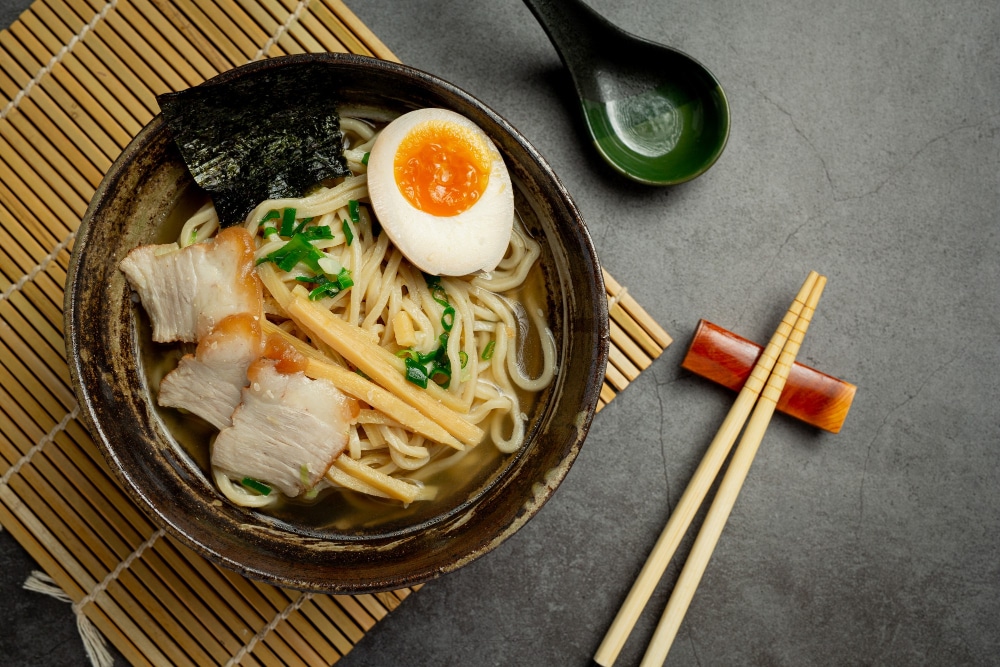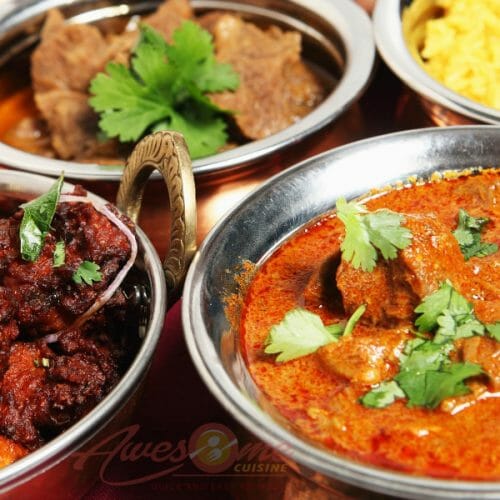Japanese comfort meals like ramen, okonomiyaki, and onigiri may appear tough to duplicate at home; yet, with the correct ingredients and methods, you can make ramen Japanese food delicacies directly in your own kitchen. Ramen has evolved from its humble origins in college dining halls into an international culinary phenomenon enjoyed by everyone from celebrity chefs and moviegoers.
Although most people think ramen is made in instant packages sold at stores, its roots run deep – it hails back centuries! This timeless dish has endless variations, but the basic recipe consists of noodles in a flavorful broth served with various meats and vegetables. The soup may be light, rich, or somewhere in between, and toppings are determined according to diners’ tastes and dietary restrictions of diners.
Vegetarians and vegans alike can enjoy light-bodied shoyu ramen made with soy sauce and seaweed. Miso ramen is often made using kombu and bonito flakes (bonito fish flakes). Additional options for both groups include tonkotsu (made with pork trotters and broth) or chicken yuzu ramen with subtle lemon flavoring. Read along to learn more about what is poke bowl food and ramen Japanese food!

Ramen to Poke
The Main Types of Ramens To Try:
Tonkotsu Ramen
Tonkotsu ramen originated in modern-day Fukuoka and lent its delectable smell to Tokyo’s Asakusa neighborhood. It is cooked by boiling pork bones for hours, resulting in a creamy, hazy broth. To try this, visit the nearby Japanese restaurant in Boston or order now!
Miso Ramen
Miso ramen is named after its principal ingredient. This broth is robust and delicious, with an opaque appearance. There are several types of miso paste, including white miso, red miso, barley miso, and soybean miso.
Shoyu Ramen
Shoyu, which means soy sauce in Japanese, is the first variety of ramen and is still popular today. There are many distinct types of shoyu ramen, but the flavor is often salty and sour. Learn more about poke Japanese food by visiting a nearby Japanese restaurant now!
Shio Ramen
Shio means salt, and this flavor of ramen is typically light and translucent. It is frequently created by boiling chicken bones and seasoning with seafood-based goods such as dried sardines, dashi stock, and bonito flakes.
Tsukemen
These thick and hearty ramen noodles are boiled, soaked in chilly water, and served with a bowl of tare ramen broth. You dip the noodles and allow the rich broth to cover each strand with flavorful wetness. Tsukemen soup comes in various tastes, including shellfish and salty pig broth.
Ramen to Poke – Everything Japanese Cuisine
Poke Bowl Japanese food has become an immensely popular snack across Hawaii, where people line up at restaurants and gas stations just to order some Poke bowls. Poke Japanese food is similar to sushi but prepared in an informal manner using rice instead of nigiri for serving purposes; you can even find poke ramen, which combines both elements! Serving authentic Japanese food to those who might otherwise never experience it is an unavoidable necessity, and chefs these days at most sushi and ramen restaurant places work hard to bring the true flavors of Japan directly to their customers’ local areas and beyond. Their reward lies in satisfying their customers’ taste buds and hearts.
Ramen has become immensely popular in Japan after its cultural exchange with China. Now, numerous styles qualify as ramen, provided both noodles and soup broth comply with specific rules. Kitakata Ramen features thick noodles coated in alkaline powder and salt known as kansui. Be sure to consult with a dietician or physician regarding how much ramen is appropriate in your diet, such as adding lean meats, eggs, soy products, and nuts as protein-rich alternatives to complete it. Visit a leading sushi and ramen restaurant to explore more!
Noodles in Japanese Cuisine
No matter the flavor profile of a bowl of ramen (shoyu, shio, miso, or tonkatsu), noodles are integral to its overall appeal. Ramen noodles differ from the thick buckwheat noodles traditionally found in Japanese udon dishes by being thin and stretchy, cooking quickly.
Most Japanese restaurant in Boston serves their food counter-style, where customers use buttons to select the type of noodle they’d like and hand the ticket directly over. Depending on the restaurant, customers may also be asked about the level of spiceiness or added toppings such as extra eggs. When served, noodles typically come with chopsticks and a Chinese-style spoon designed for use when eating soup broth with toppings; slurping is encouraged as it helps cool off noodles while enriching their flavors.
Broth in Japanese Cuisine
A tasty bowl of ramen begins with an aromatic broth that packs a flavorful punch. A good base may include Japanese soup stock (dashi), chicken, or pork stock, simmered with ginger, garlic, and scallions to give your base flavor; each chef then adds their flair by utilizing their “tare,” or seasoning sauce. Some ramen shops manufacture wheat noodles, while others purchase them from manufacturers.
Ramen toppings typically include roasted or braised fatty pork (chashu), egg, bean sprouts, bok choy, and nori seaweed for texture, variety, and flavor enhancement. You could add your favorite spicy elements, such as Sriracha, to add more heat! Or, if you prefer vegan alternatives, try swapping out meat for your preferred plant-based protein option – and enjoy making your bowl completely vegetarian- or vegan-friendly!
Toppings in Japanese Cuisine
Adding toppings is key for making ramen truly delectable, adding extra flavors and textures, improving its aesthetic appearance, and creating a new dimension of the experience. Green vegetables are a favorite selection for soup. Bok choy softens perfectly when simmered in hot broth, while spinach or kale offers an unexpected bitter bite and plenty of essential vitamins and minerals. Shiitake mushrooms add a unique texture and meaty flavor; fresh or dried versions (known as “kikurage”) may be added for extra texture, typically purchased dry and then soaked before adding liquid.
Butter is an unexpected but delectable addition to miso-based ramen dishes, deepening and intensifying its umami flavors while making each bite even richer. Furikake — bonito flakes — are another quick and simple way to bring an extra umami to boost into each bowl. Many flavors are available; you can select according to your taste!
Method of Eating Japanese Cuisine
If you want to eat ramen like a local in Japan, make sure you know all of the do’s and don’ts when devouring this soupy dish. Remember: always begin by sipping some soup first, so feel free to start slurping up noodles! As part of Japanese culture, you should never twirl or bite your noodles, which can be considered impolite and rude.
You can try a sushi burrito in Seaport or at a nearby sushi and ramen restaurant the way you want. Drinking water or iced tea while enjoying your ramen will help dilute its broth and enhance its taste while cutting any unpleasantness associated with eating it.
Conclusion
Ramen noodles are one of the world’s best-known Japanese dishes. Yet, many may be unaware that this traditional meal can also be healthy and nutritional if selected carefully and using appropriate broth and add-ins. Ramen is a type of noodle soup prepared by combining noodles with broth that may include vegetables, meat, or fish, depending on its regional and stylistic ingredients. Ramen can also feature toppings such as slices of pork or beef, anchovies, scallions, seaweed, and eggs for additional flavors. It can be served either hot or cold.
Ramen has an enjoyable texture and flavor combination, which makes it both satisfying and comforting – especially on cold winter days or when feeling under the weather. Incorporating it into your diet as part of weight or glucose level management could also be helpful. Visit the nearby Japanese restaurant in Boston to learn more about ramen Japanese food and explore them now!












